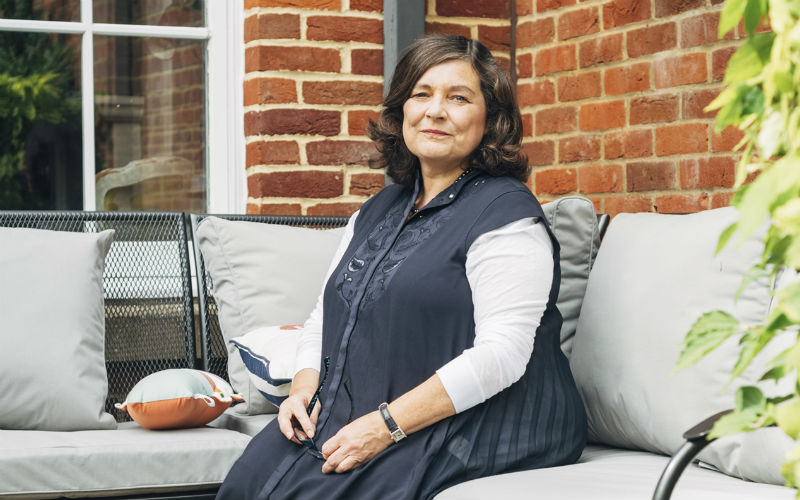After Starling topped our 100 FinTech Disrupters ranking and revealed it is close to breaking even, we asked founder and CEO Anne Boden MBE about the challenges of turning a profit
What led you to start up a bank?
Technology has changed everything, from the way we shop, to the way we communicate with one another. After the 2008 financial crisis, it became clear to me that banking hadn’t progressed technologically in the way other sectors had. This frustrated me, so I launched Starling.
How does Starling’s offer differ from other banks?
Because Starling works in an agile manner, with collaboration in multidisciplinary teams and a flat organisational structure, we are able to adapt quickly to change. This makes us quite different from traditional banks, which tend to be highly bureaucratic, hierarchical and process-driven.
Starling has an established SME bank and toolkit and we have done more than £1 billion of lending. This puts us on a path to profitability and means we expect to break even by December 2020. We do not just rely on interchange.
Also, our customer base is older, with an average age of 37, is more mature than at other digital banks. And a lower proportion of our transactions are overseas – so we are not just a ‘holiday card’.
We’re not stuck in a London bubble; in fact, just 22% of customers are in London and our growth remains strong right across the UK.
Does the company today hold true to your original vision?
Yes. My vision was and still is to transform the way people manage their money and serve customers in a way that traditional banks hadn’t. We do this by listening to our customers and providing them with products and services which are constantly evolving to meet their needs.
We launched cheque imaging during full lockdown, so people could process cheques without leaving the house. We have also just launched a child account as parents told us they wanted an alternative solution to cash when funding their kids’ spending money.
What is key to a neobank achieving profitability?
To build a successful digital bank from scratch, you must first lay firm foundations, with a proper regulatory framework, a strong technology architecture and a clear product roadmap. It may seem to slow down growth, but it means that when a storm hits, you can be ready to go in whatever direction you need to.
When coronavirus hit, we were already working on unsecured lending and were able to become part of the government-backed lending schemes, the Bounce Back Loan Scheme and the Coronavirus Business Interruption Loan Scheme. We’re committed to £1 billion of this lending.
Modern technology and a low–cost base [are also important]. Incumbent banks rely on outsourced expertise, legacy systems or a mosaic of vendor packages and their own data centres. Starling has in-house engineering teams and its own core banking software running in the cloud. So while the incumbent banks may well be able to copy some of our features, they can’t copy our cost base.
We were uniquely positioned when lockdown was imposed to ensure business continuity and resilience, to move to remote working and to continue to support our customers 24/7.
Would you say it is crucial to sign up customers of a certain profile, rather than chase as many customers as possible?
At £3.3 billion, our deposit base is significantly higher than other digital banks in the UK, even though we have fewer customers. Our customers hold much higher average balances, suggesting that more of them use us as their primary bank account.
We have found that customers on average maintain higher deposit balances the longer their Starling account is open and newer cohorts of customers open accounts with higher balances.
How important has providing business accounts been to your success?
It’s very important. We hold a more than 3% share of the UK’s SME banking market. This is a cohort which was in desperate need for help, they needed the option to bank with a company which was tech–savvy, saves them time and makes money management easier. I feel we have touched the tip of the iceberg by offering them services such as the Business Toolkit – a suite of accounting and bookkeeping features which can help them with invoicing, bill payments, expense management and VAT returns. We also have our growing Marketplace which offers up a range of complementary services, which customers can link to their Starling account to manage their finances more easily.
How do you convince customers to use Starling as their main bank account, holding income and savings?
We don’t need to convince them. A typical active retail customer credit and debits their account by more than £1,500 per month and people tend to switch to Starling being their main account quite quickly once they have experienced our offering.
Describe the importance of APIs to your business.
Open API integrations help data move between the different tools which customers use, improving transparency of payments flow, which can often be another source of uncertainty for business customers for whom managing cash flow is so important.
At Starling, we’re such big advocates of API integrations that we actively offer our customers a range of these in our in-app Marketplace, from accountancy software to legal support and insurance. With one in three of our business customers connecting one third party product this way, it’s a great example of how APIs can help businesses manage their money more easily.
How do you drive up loyalty in your client base when it’s easier to switch banking provider in this tech-enabled world?
Loyalty stems from giving customers a bank account and smart money tools that are relevant and useful to the way they live their lives – especially when the average person spends three hours a day on their phone. Loyalty also comes from reliability – the app works. We are very resilient operationally with minimal service disruption.


